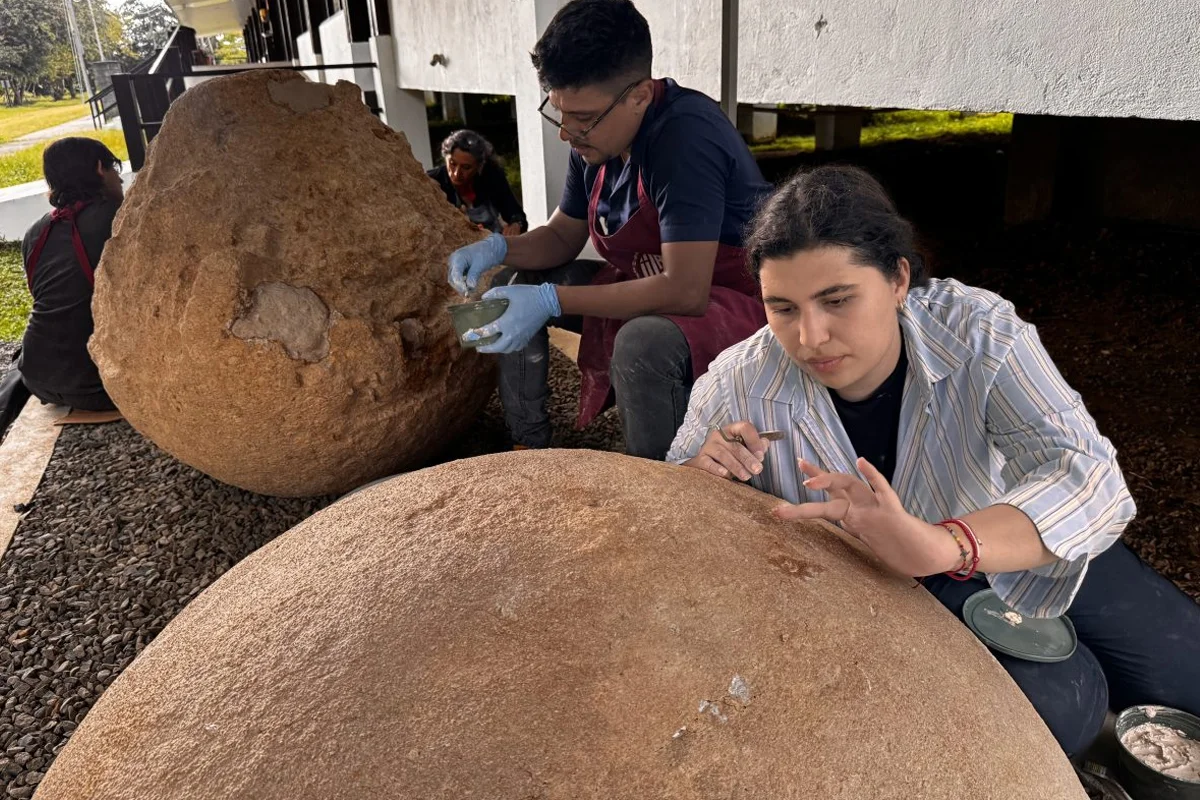A joint team of specialists from Costa Rica and Mexico are restoring three stone spheres at the Finca 6 Museum Site in Palmar de Osa.
To date, over 300 stone spheres, often also referred to as the Diquís Spheres, have been discovered on the island of Isla del Caño and the Diquís Delta in Costa Rica.
The spheres have been attributed to the now extinct Diquís culture, a people that first emerged in the Valley of the Rio Grande de Térraba during the Synancra period (1,500 to 300 BC).
Previous studies suggest that Diquís artisans placed the spheres in alignments within public plazas or along the approach to the dwellings of the ruling elite or chieftains. They were crafted by hammering boulders into rough spherical shapes using denser rocks, then meticulously polished using sand to achieve a smooth finish.
The spheres being restored by the project were originally discovered at Finca 4 – a collection of settlements that developed on the alluvial plains of the Sierpe and Térraba rivers.

Finca 4 contains the largest concentration of stone spheres among all the known Diquís sites, which are arranged in groups linked to architectural structures and aligned in geometric patterns across open plazas.
According to the National Museum of Costa Rica: “These spheres were displayed near the road in a nearby community, then moved to the Finca 6 Museum Site. The vulnerability of the limestone rock and the effects of environmental conditions caused the sculptures to suffer alterations such as water erosion, concretions, loss of material, presence of microorganisms, fissures and weakening.”
To stabilise the spheres, the team applied a series of treatments including mechanical cleaning, removal of microorganisms, use of mild bactericides, and the consolidation of fragile areas with lime-based mortars compatible with the original stone.
Small chromatic restorations were also made with natural pigments, ensuring the additions remain visible and reversible, in line with international conservation standards. “We placed mortar layers to replace lost material, always respecting reversibility so the original stone is not harmed,” explained Leifer Castro from the National Museum.
Header Image Credit : NMCR
Sources : National Museum of Costa Rica







